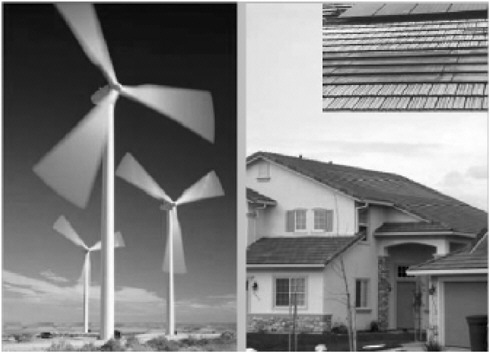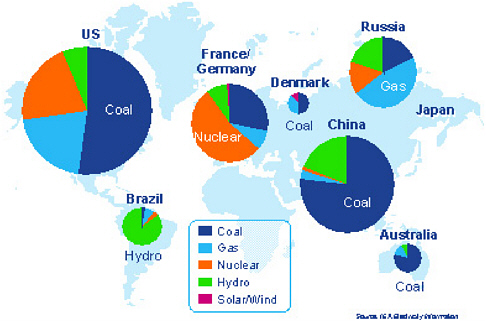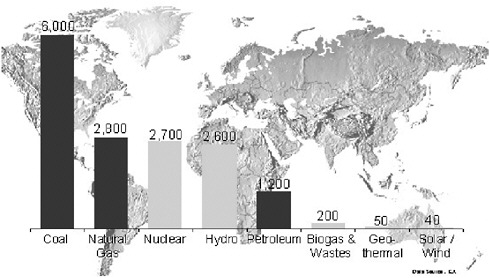Future Energy
JOHN K. REINKER
GE Global Research
Niskayuna, New York
Abundant, low-cost energy is essential to a modern society and a necessity for economic expansion, and transportation, electricity, and industrial requirements necessitate a balance of energy sources. Beyond low cost, however, pressures are increasing for environmentally sound energy solutions. In this presentation, I describe the development of the current electrical energy status in the United States and then discuss leading-edge developments in technology that will transform the energy portfolio of the future and support continued growth.
HISTORICAL PERSPECTIVE
Early industry in the United States was dependent on water for both transportation and power. The advent of electricity, a clean energy carrier, broke the geographic tie between energy source and energy use. The combination of electricity and the development of the internal combustion engine at the turn of the 20th century accelerated economic development.
The electrical grid in the United States was also dependent on hydropower, and many of the earliest hydroelectric dams are still operating throughout the country. As the grid spread, major changes in waterways occurred as a result of hydroelectric power projects and many of the natural hydropower sources were utilized. Eventually, the amount of power was restricted by the lack of new hydropower locations. Thus, other technologies became necessary to meet the growing electrical needs of the country.
Tremendous increases in electric power were achieved through the harnessing of coal. Even though overall power-plant efficiencies were in the 10 percent range, steady improvements were made, such as improved materials that allowed for higher steam pressures and temperatures. Improvements in the Rankin cycle, including feed-water heaters and reheat cycles, led to efficiencies approaching 40 percent. Today, nominal 1,000°F, 3,500 psi steam conditions are common.
With the development of nuclear technologies in the mid-20th century, nuclear power plants became economically attractive. In the United States, more than 100 nuclear power plants were installed, and they now produce 16 percent of the electrical output. These light-water reactors provide energy that powers steam-turbine generators. In the aftermath of the Three Mile Island incident, however, there was a shift away from building new nuclear power plants in the United States. Other nations, however, continued to build nuclear plants, and France now produces approximately 80 percent of its electricity from nuclear power. In the United States, nuclear power operators focused on improving plant performance and improved plant availability from 60 percent to more than 90 percent.
With the development of the jet engine, gas-fired turbines became available. By combining the combustion process and turbine technologies into a single package, a high power-density system was created. Gas turbines, which have rapid start-up capabilities and low cost, initially provided great peak-power capabilities. Subsequently, advances in combined-cycle technology, in which the waste heat of a gas turbine is captured through a heat-recovery steam generator and then converted to electricity through a steam-turbine generator, greatly increased the efficiency of power plants. A large number of plants that use this combined-cycle technology have been constructed in the past decade.
Recently, renewable technologies have been included in the utility purchase portfolio. Large blocks of wind power are being installed by major utilities, and solar panels are becoming cost effective in the southwestern United States.
The United States now produces approximately half of its electricity from coal, with the remaining half from natural gas, nuclear, and hydropower feedstocks (Figure 1). The energy sources for different regions of the world vary significantly, driven mainly by the availability of natural resources, such as coal and hydropower, but also by public acceptance of nuclear power. Figure 2 shows the overall electrical feedstock usage for the world—where traditional electrical feedstocks are used and where renewable sources are increasingly being used.
ECONOMIC DRIVERS
Energy investments are “large bets” placed by corporations on technology, fuel pricing, and customer demand. Even though many assume that the overall efficiency of a power plant is the primary economic driver, savings from effi-
ciency may be offset by high fuel costs. For example, most of the natural-gas-fired, combined-cycle power plants commissioned during the recent U.S. power bubble represent the state of the art in terms of efficiency. Nevertheless, many of them have failed because of a spike in the price of natural gas. Even the most efficient plants could not overcome the cost penalty associated with high fuel costs and market-based pricing for electricity. Companies try to balance these risks by securing long-range fuel contracts and sales agreements. Companies are also required to manage emissions and may be required to pay taxes on carbon in the future.
To encourage the development of new technologies, governments can provide incentives for investments in certain energy sources. For example, in some regions of the United States, renewable portfolio mandates have been put in place. These mandates require that power from renewable sources be managed at the regional level so that the intermittency of wind and solar power do not affect the delivery of continuous energy to end customers.
EMERGENCE OF RENEWABLE POWER TECHNOLOGIES
Major advances have been made in wind turbine technologies. Most installed plants provide approximately 1 megawatt (MW) of power, but with the development of larger platforms, 5 MW offshore units are now being developed. These new plants will reduce capital investment and make wind power more competitive in the marketplace. The key technologies to making large units are longer blades, active wind controls, and power electronics to manage the conversion of the shaft torque to electrical power.
Solar power has a market advantage over other renewable power sources because it is competing in the residential market rather than the wholesale electricity market. The disadvantage of solar power is that the technology must be refined to reach the end consumer as part of an overall energy package. However, solar-power technology continues to improve, and today some homes are being built with integrated solar technology (Figure 3).
Technology development is under way on another attractive energy source, bioenergy (gases from landfills and coal that can be harnessed to generate electricity). Research is also under way on using agricultural feedstocks to generate electricity.
RETURN TO COAL AND NUCLEAR POWER
As the price of natural gas rises, the availability of low-cost coal and the strong performance of nuclear power plants have made traditional coal and nuclear plants more attractive. To make them more acceptable to the industry, regulators, and the public, many improvements are being developed.
A clear technological “game changer” for the coal industry is the develop-

FIGURE 3 A wind-turbine farm and a solar-powered home.
ment of advanced coal-gasification technologies. Conventional coal plants pulverize coal and then burn it in traditional boilers. Emissions must be cleaned up after combustion, and power is generated through a conventional Rankin cycle. With a coal gasifier, integrated coal combined-cycle (ICCC) plants can transform coal into a syngas, which enables the removal of many contaminants prior to combustion. In addition, the creation of the syngas means the Rankin cycle can be replaced with the highly efficient combined cycle.
In the long term, improved performance and lower emissions can also be achieved with advances in gas-turbine technologies. In the past 20 years, as a result of improved materials, coatings, and heat-transfer/cooling technologies, firing temperatures have increased from 2,000°F to 2,600°F. This has increased overall cycle efficiency from 50 percent to 60 percent, and improved emissions by an order of magnitude. Other manufacturers have improved performance by adding a second combustion system to improve overall efficiency at lower firing temperatures. In the future, solid-oxide fuel cells (SOFCs) could replace the combustion system of the gas turbine, resulting in a hybrid SOFC that could increase overall efficiencies to 70 percent or more.
Similar advancements are currently being made in the nuclear industry. Major reactor manufacturers in the United States are currently applying for licensing for new plants that will have larger power ratings than older plants and
lower operating and maintenance costs per kW. In addition, these plants will have inherently safer designs with advanced control technologies, which will result in increased plant availability. Regulatory improvements have also been made: owners can apply for combined licenses instead of having to build plants under single-construction licenses and then apply for operating licenses.
FUTURE ENERGY
In the future, as energy demands rise worldwide, large quantities of power will be required that do not result in emissions of carbon dioxide. However, then, as now, no single energy solution will be right for any region. It is clear that we will be living in a carbon-constrained world in the future, and renewable sources will be part of the solution. In fact, there will be a portfolio of solutions, including nuclear power. Advances in technologies will continue to be critical.
Clear regulatory frameworks will be necessary to assure industries that they will have an adequate return on investments in technologies necessary to improve efficiencies and control emissions/greenhouse gasses. Energy equipment manufacturers will invest in a portfolio of solutions to meet their customers’ needs. Satisfying the world’s demand for energy will require a balanced portfolio of energy options, including coal, natural gas, nuclear, wind, hydropower, solar, and, eventually, bioenergy.
REFERENCE
International Energy Agency Information Center. 2005. Available online at: http://www.iea.org/Textbase/subjectqueries/index.asp.








